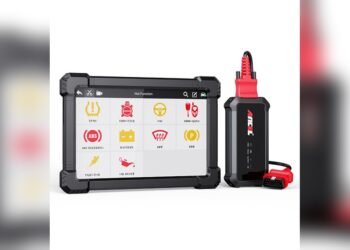Seeing coolant leaking from the bottom of your car can be alarming. This issue needs attention before it leads to bigger problems.
Coolant leaks can cause engine overheating and damage. When you notice a pool of green or orange fluid under your car, it’s likely coolant. This fluid is crucial for keeping your engine at the right temperature. Ignoring a coolant leak can lead to costly repairs.
In this post, we’ll explore the common causes of coolant leaks, how to identify them, and what steps to take next. Understanding these basics can help you address the issue quickly and keep your car running smoothly. Stay with us to learn more about handling this common car problem.

Credit: www.whipflip.com
Common Causes Of Coolant Leaks
Coolant leaks are a common issue for car owners. They can cause significant damage if ignored. Understanding the common causes of coolant leaks helps in identifying and fixing the problem early. Leaks can occur from various parts of the cooling system. Key areas to inspect include the radiator and the water pump. Below, we explore these common causes in detail.
Damaged Radiator
A damaged radiator is a frequent cause of coolant leaks. The radiator cools the engine by allowing coolant to flow through its tubes. Over time, the radiator can get damaged due to:
- Corrosion: Rust can form inside the radiator, creating holes.
- Physical Damage: Debris from the road can puncture the radiator.
- Wear and Tear: Over time, seals and joints can degrade.
Inspect the radiator regularly for signs of damage. Look for wet spots or coolant residue under the car. If the radiator is leaking, it may need repair or replacement.
Faulty Water Pump
The water pump is crucial for circulating coolant through the engine. A faulty water pump can lead to leaks. Common issues with the water pump include:
| Issue | Description |
|---|---|
| Worn Bearings: | The bearings wear out over time, causing leaks. |
| Damaged Gaskets: | Gaskets seal the pump. They can crack and cause leaks. |
Signs of a faulty water pump include coolant pooling under the car and a whining noise from the pump. Early detection and repair can prevent engine damage.
Identifying Coolant Leak Symptoms
Identifying coolant leak symptoms early can save you from costly repairs. Understanding these symptoms helps maintain your car’s health. Here are some common signs to look out for.
Puddles Under Car
One of the first signs is finding puddles under your car. These puddles often appear near the front of the vehicle. They are usually green, orange, or pink. These colors indicate a coolant leak. Check the consistency too. Coolant feels slippery and has a sweet smell. If you notice this, your car might have a coolant leak.
Engine Overheating
Another symptom is the engine overheating. Coolant helps regulate engine temperature. If there’s a leak, the engine can overheat. Watch your car’s temperature gauge. If it goes into the red zone, it’s a warning sign. Pull over safely if your engine overheats. Driving with an overheated engine can cause severe damage.
Checking The Radiator
Dealing with a coolant leak from the bottom of your car can be a headache. One of the first steps in troubleshooting this issue is checking the radiator. The radiator is a critical component in your vehicle’s cooling system. A thorough inspection of the radiator can help identify the source of the leak.
Inspecting For Cracks
Begin by visually inspecting the radiator for any visible cracks or damage. Cracks in the radiator can cause coolant to leak. Use a flashlight to look at the radiator closely. Pay attention to the following areas:
- The front and back surfaces
- Seams and joints
- Hoses connected to the radiator
Small cracks might be hard to see. If you suspect a crack, you can use a magnifying glass. Look for any signs of corrosion or rust, as these can indicate leaks. A cracked radiator often needs to be replaced.
Testing Radiator Cap
The radiator cap is another potential source of leaks. A faulty cap can cause pressure issues, leading to coolant loss. To test the radiator cap, follow these steps:
- Ensure the engine is cool before opening the radiator cap.
- Remove the cap and inspect it for any visible damage.
- Check the rubber gasket for cracks or wear.
- Use a radiator cap tester to check the cap’s pressure rating.
If the radiator cap fails the pressure test, replace it with a new one. A proper seal is crucial to maintaining the correct pressure in the cooling system.
Regular maintenance and inspection of the radiator and its components can prevent coolant leaks. Addressing issues early can save you from more costly repairs down the road.
Credit: forum.ih8mud.com
Examining The Water Pump
If you notice coolant leaking from the bottom of your car, the water pump could be the culprit. The water pump plays a crucial role in your car’s cooling system. It circulates coolant through the engine to prevent overheating. A malfunctioning water pump can cause serious problems. Let’s dive into some ways to check your water pump.
Looking For Corrosion
Corrosion is a common issue with water pumps. It can weaken the pump and cause leaks. To check for corrosion, follow these steps:
- Park your car on a flat surface.
- Turn off the engine and let it cool.
- Open the hood and locate the water pump.
- Look for any signs of rust or corrosion around the pump.
If you see corrosion, the water pump might need replacement. Corroded pumps cannot circulate coolant effectively. This can lead to engine overheating.
Checking Seals
The seals on the water pump are also essential. They prevent coolant from leaking out. Here’s how to check them:
- Ensure the engine is cool before starting.
- Inspect the area around the water pump.
- Look for any wet spots or dried coolant marks.
Leaking seals can cause coolant to escape. This can lead to low coolant levels and overheating. Replacing faulty seals can prevent further damage.
Regular maintenance can keep your water pump in good condition. Check for corrosion and seals regularly. This can help prevent costly repairs.
Inspecting Hoses And Clamps
Coolant leaking from the bottom of your car can be alarming. One common cause is faulty hoses and clamps. Regularly inspecting these parts can prevent leaks and bigger problems. This section will guide you on what to look for during your inspection.
Checking For Wear
Start by examining the hoses for any visible wear. Look for cracks, bulges, or soft spots. These signs indicate a weakened hose. A damaged hose can leak coolant, leading to engine overheating.
Also, check the clamps securing the hoses. Rust or corrosion on the clamps can weaken their grip. A loose clamp can cause coolant to escape, leading to leaks.
Ensuring Tight Connections
Next, ensure all hose connections are tight. Use a screwdriver to gently tighten the clamps. Be careful not to overtighten, as this can damage the hose. A snug fit ensures no coolant can leak out.
After tightening, run your car for a few minutes. Check the connections for any signs of leaks. If you see coolant, the hose or clamp may need replacing.
Regular inspection of hoses and clamps can save you time and money. It helps keep your car running smoothly. Don’t wait for a leak to check these essential parts.

Credit: mechanics.stackexchange.com
Assessing The Coolant Reservoir
Coolant leaks can be alarming. The coolant reservoir is often the source. Understanding how to inspect this part is crucial. It helps in identifying and fixing the problem. This guide will walk you through the process.
Inspecting For Leaks
Start by examining the coolant reservoir. Look for any visible cracks or damage. Use a flashlight to inspect hard-to-see areas. Check the bottom of the reservoir. Leaks often start there. If you notice any wet spots, it’s a clear sign. Also, check the hoses connected to the reservoir. They should be tight and free from cracks.
Monitoring Coolant Levels
Keep an eye on the coolant levels. The reservoir has minimum and maximum markers. The coolant should be between these levels. If the level drops frequently, it indicates a leak. Refill the coolant and monitor it over a few days. A consistent drop confirms the problem. Always use the recommended coolant for your car.
Diy Fixes For Coolant Leaks
Coolant leaking from the bottom of your car can be alarming. It is crucial to address this issue promptly to avoid engine damage. Here are some DIY fixes that you can try at home to manage coolant leaks effectively.
Using Leak Sealant
Leak sealant can be a quick and effective solution for minor leaks. Follow these simple steps:
- Purchase a high-quality leak sealant from an auto parts store.
- Ensure the engine is cool before starting.
- Open the radiator cap carefully.
- Pour the sealant into the radiator.
- Start the car and let it run for 15-30 minutes.
The sealant will find and seal small leaks in the system. It is a temporary fix, and the underlying issue may need professional attention later.
Replacing Damaged Parts
If the leak is due to damaged parts, replacing them might be necessary. Common parts that cause leaks include:
- Radiator hoses: Inspect for cracks or splits.
- Water pump: Check for leaks around the pump.
- Radiator: Look for rust or damage.
Here is a simple guide to replace a radiator hose:
| Step | Description |
|---|---|
| 1 | Ensure the engine is cool. |
| 2 | Drain the coolant from the radiator. |
| 3 | Remove the damaged hose using a screwdriver. |
| 4 | Install the new hose and secure it with clamps. |
| 5 | Refill the radiator with coolant. |
| 6 | Start the engine and check for leaks. |
Replacing damaged parts might seem daunting, but with patience, it can be done. Always consult your car’s manual for specific instructions.
When To Seek Professional Help
Coolant leaking from the bottom of your car can indicate serious issues. Seek professional help immediately to prevent engine damage. Ignoring this problem may lead to costly repairs.
Coolant leaking from the bottom of your car can be a worrying sight. It’s essential to know when to seek professional help. Not all leaks can be fixed with a simple DIY approach. Some situations require the expertise of a trained mechanic. Here are some scenarios where professional help is necessary.Persistent Leaks
If you notice a coolant leak that doesn’t go away, it’s time to seek help. Persistent leaks often indicate a deeper problem. They can affect your car’s performance and safety. Don’t ignore them. A professional can diagnose the issue accurately. They have the tools and knowledge to fix it. Continuing to drive with a persistent leak can lead to engine damage. It can also cause overheating.Complex Repairs
Some coolant leaks involve complex repairs. These repairs need specific skills and tools. For instance, a radiator replacement or a water pump issue. These tasks are not suitable for a DIY fix. A trained mechanic can handle these repairs. They ensure the job is done correctly. Attempting complex repairs on your own can cause more harm. It may also void your car’s warranty. Seeking professional help ensures your car runs smoothly. It also saves you time and potential headaches. Always prioritize safety and proper maintenance. “`Frequently Asked Questions
What Causes Coolant To Leak From The Bottom Of The Car?
A damaged radiator, a broken hose, or a faulty water pump often cause coolant leaks.
How Can I Identify A Coolant Leak?
Look for a puddle under your car, check for low coolant levels, and monitor the temperature gauge.
Is It Safe To Drive With A Coolant Leak?
No, driving with a coolant leak can cause the engine to overheat, leading to severe damage.
How Much Does It Cost To Fix A Coolant Leak?
The cost varies. Minor repairs like hose replacement may cost less, while major repairs like radiator replacement are more expensive.
Can I Fix A Coolant Leak Myself?
Yes, minor leaks like a loose hose clamp can be fixed at home. Major issues need a mechanic.
Conclusion
Address coolant leaks promptly to avoid serious engine damage. Regular maintenance helps prevent leaks. Check hoses, clamps, and the radiator. Seek professional help if unsure. Ignoring leaks can lead to costly repairs. Ensure your car runs safely and efficiently. Stay proactive to keep your vehicle in top shape.
Regular inspections save time and money. Keep an eye on your car’s health for a smooth ride.

















